On top of the mountain Sabulo rises the charming town of Fermo, at about 6 km from the Adriatic Sea. It is characterised by an imposing cathedral and its territorycan be divided into two parts: the historical part from the medieval age and the new industrial one. Fermo is one of the most important centres of the region thanks to its history, business activities, tourist and cultural events renewed every year. The area is a mix of sea and hills, ranging from the wide beaches of Lido di Fermo, Casabianca and Marina Palmense, to the lovely village of Torre di Palme perched over the sea in a dominant position. Together with Macerata and Ascoli Piceno, the province of Fermo shares the Monti Sibillini National Park.
Walking around the centre of Fermo
The old town of Fermo is bordered by 14th century walls of the Sforza era with gates and towers. The access gates which are still visible are those ones dedicated to St. Anthony, St. Catherine and St. Julian. The heart of the town is the main square Piazza del Popolo, enclosed between two large row of lodges, one of the most evocative spots in Fermo. Here it is located the Palazzo dei Priori, the representative office of the Municipality, the art gallery and the Piceno Archaeological Museum. The Art Gallery preserves works ranging from the Middle Ages until the nineteenth century, including works by artists from Le Marche. The Archaeological Museum instead exposes findings of the pre-Roman Fermo, including belts, urns and picena vintage jewellery. Inside the building you'll find the Globe Hall entirely decorated in walnut wood, which houses the municipal library, one of the richest of Le Marche region and in the top ten of Italy. It dates back to 1511 and retains 128 codes, over 400,000 volumes, 686 incunabula (the oldest date back to 1470), 15,000 "Cinquecentine", 6000 prints of famous authors and over 2000 drawings. Fermo is rich in churches, the most famous one is undoubtedly the Cathedral or Duomo of Fermo dedicated to the Assumption. It is located in the upper part of the city next to the Diocesan Museum. Inside the Cathedral you can visit the excavations with the evocative mosaic of the pagan temple. The whole area is characterised by a panoramic view named Belvedere or Piazzale del Grifalco. The Aquila Theatre is one of the major opera houses in Italy with a capacity of about 1000 seats, 124 boxes and 350 square metres of stage. Here are preserved six original scenarios and autographs of Alessandro Sanquirico. In the historical centre there are ancient fountains including Fontana Episcopato, Fontana del Duomo, Fonte di San Francesco di Paola and many others. As well as having museums, churches and historic buildings, Fermo is also home to the Faculty of Cultural Heritage, belonging to the University of Macerata. The Roman Aqueduct is an important architectural complex consisting of 30 large rooms linked together and arranged in two parallel rows to gather water. You can still visit the cisterns, as they're in a very good state of preservation.
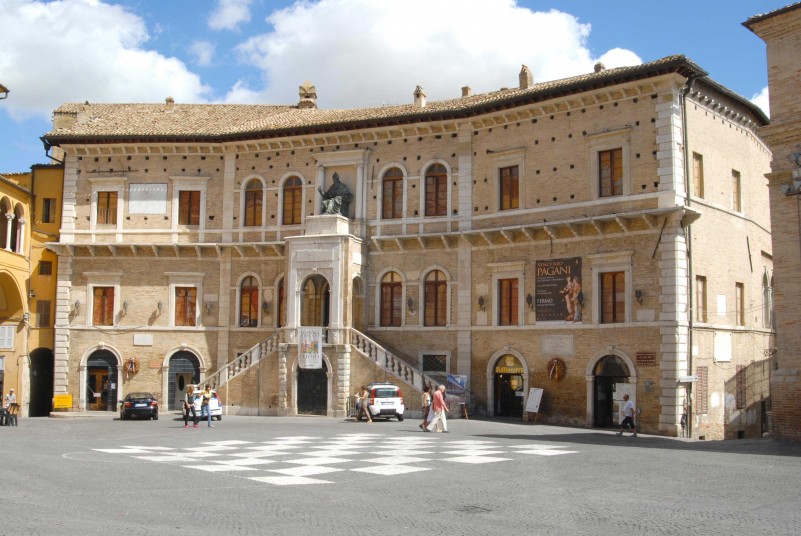
Food and Wine
Cooking tradition in Fermo alternates meat specialities with fish dishes. There are also characteristic dishes based on herbs, such as the soup of herbs and cereals, nettle tagliatelle (fresh hand made noodles) and fried acacia flowers. As a starter, cheeses and sausages are very common and usually accompanied by pizza, like the variant with cheese or the so called 'crescia', made with bread dough. Among the cured meats, you cannot miss the ciauscolo, the salami fermanello and the lonzino, whereas among the cheeses, I suggest the caciotta, pecorino and ricotta. The most famous first courses are the maccheroncini campofilone, or the well-known vincisgrassi, a regional version of the lasagna. Traditional second courses are the fegatelli, porchetta or budellini (casings) of lamb. Toward the coast instead, fish is the protagonist. Fish brodetto (soup), grilled fish or the famous oven baked monk-fish are worth trying. Ascolana olives and the Cremini, small cubes of fried custard, are typical of the area and are served as side dishes or appetisers on some occasions. Classic local desserts are the cicerchiata, the ciambellotto, pancakes or sfrappe (fried fresh pasta). Excellent wines are produced in this territory, such as Falerio dei Colli Ascolani or Rosso Piceno. After dinner you can taste also the cooked wine or homemade mistrà (anise liquor ideal as digestive).
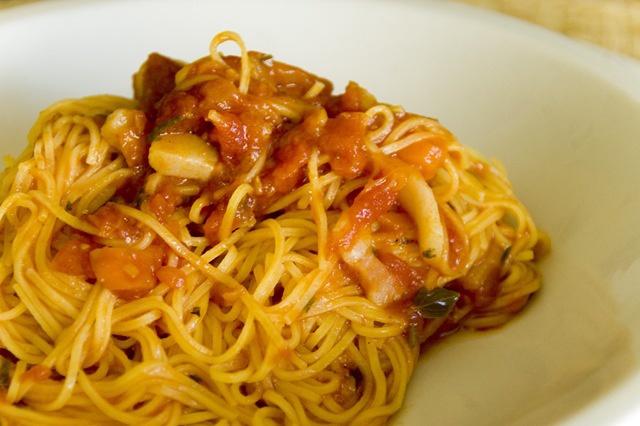
Nearby Fermo
The Province of Fermo consists of 40 municipalities: Montegiorgio, Smerillo, Porto Sant'Elpidio, Amandola, Pedaso, Moresco, Campofilone, Falerone and many others. The coast is characterised by long beaches among which the equipped beach of Porto Sant'Elpidio, Lido di Fermo, Casabianca, the seafront of Porto San Giorgio, the coves of Pedaso, Marina di Altidona, etc. In a more panoramic area rises the romantic medieval village of Torre di Palme, which is located on a high promontory near Marina Palmense. A visit is strongly recommended! Do not miss the Gola dell'Infernaccio (Gorge) located near Rubbiano.
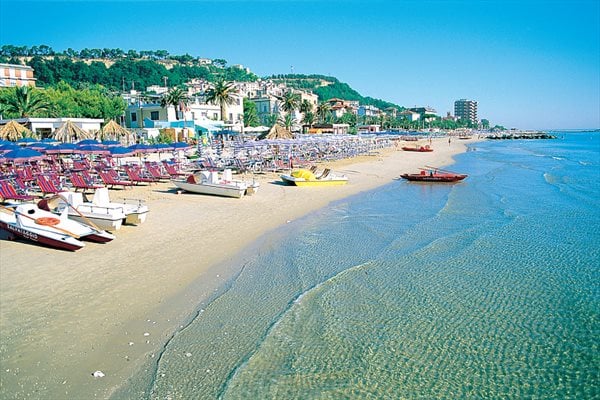
Activities to practice
Thanks to its particular position, Fermo offers lots of entertainment opportunities. The beaches are well equipped both for adults and children. There are chalets and restaurants to spend the evenings with music and shows. You can practice wind surfing, sailing and many others water sports. There is also a bike path starting from Casabianca di Fermo and going up to the village of San Tommaso. Even inland you can enjoy trekking, mountain biking, horse riding and hiking through the Monti Sibillini Park. From Fermo you can organise tours to outlets of famous brands like Prada, Cesare Paciotti, Nero Giardini, Della Valle, Tod's, etc and many other craft shops of leather goods and shoes. Fermo is actually famous for the production of hats and accessories.
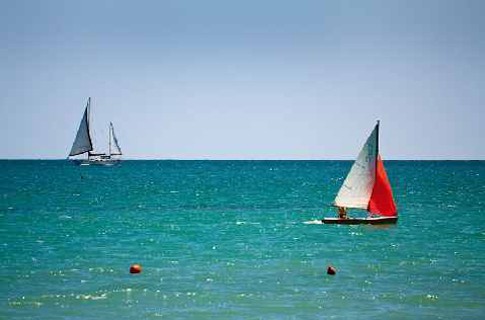
Events
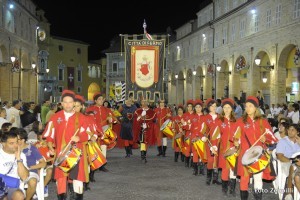 The most famous event is the Palio and ride of the Assunta which takes place from late July to mid-August.
The most famous event is the Palio and ride of the Assunta which takes place from late July to mid-August.
During the event there are numerous historic reenactments, most with traditional costumes of the times, accompanied by the typical taste of Le Marche cuisine.













